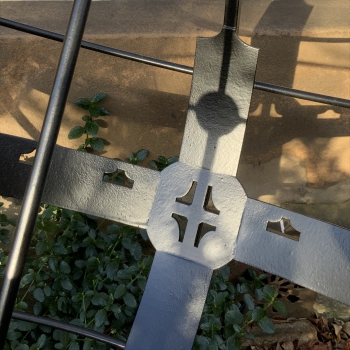
On 10 October the autumn equinox has passed and the cursor reading point has moved out from the inner circle of the dial towards winter solstice at the circumference. The sighting arm carries a short vertical gnomon which casts its shadow in line with the sun.
The azimuth sundial is an intriguing instrument. It finds the time from the direction of the sun. This idea sounds simple, the sun rises in the East, at Noon it is due South, and it sets again in the West, but it is complicated by the time of year. This note is about a new design for a precision azimuth sundial to go in a garden. Continue reading


